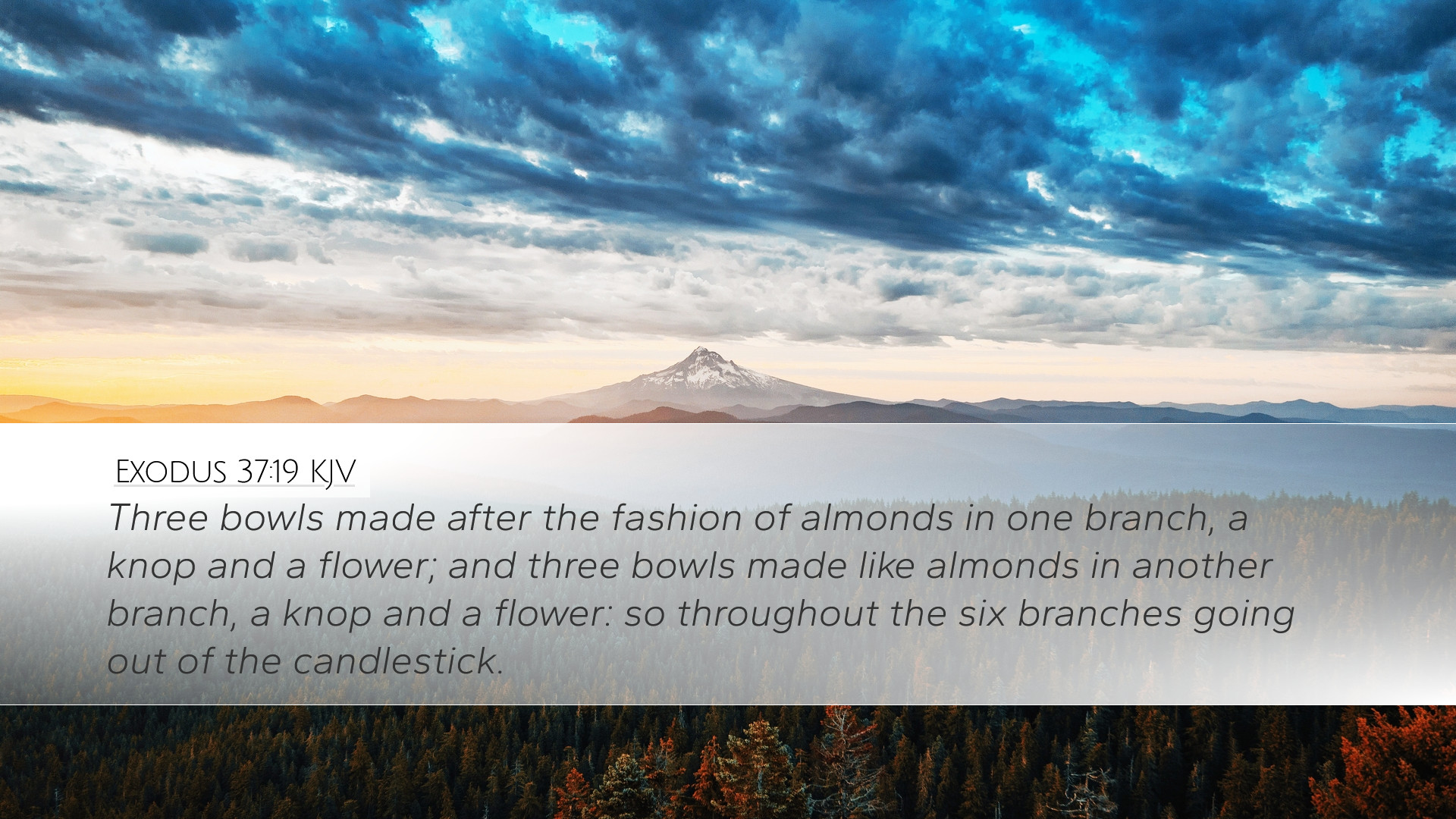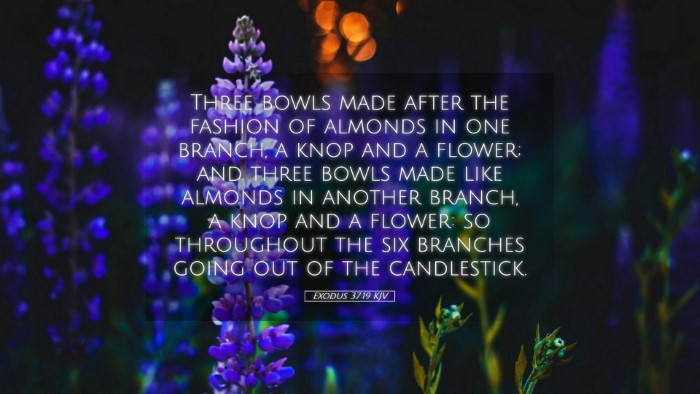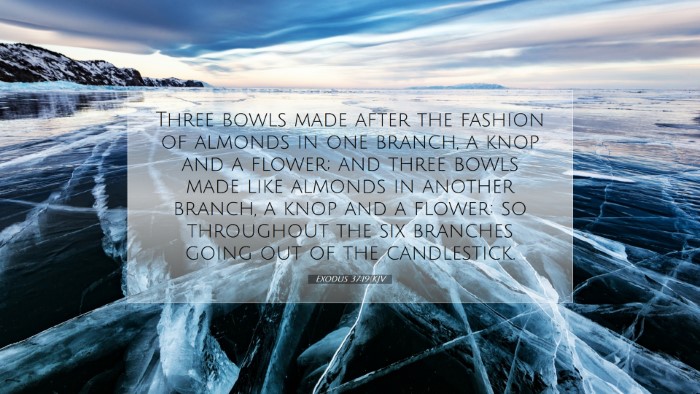Commentary on Exodus 37:19
Verse Context: Exodus 37:19 reads, "And in the candlestick were four bowls made like almonds, his knops, and his flowers." This verse is part of the description of the candlestick (menorah) that God instructed Moses to make for the Tabernacle, a significant element of worship in the Israelite community.
Overview of the Candlestick
The candlestick, or menorah, is an essential symbol in the Tabernacle, representing both divine light and the spiritual illumination that God provides. According to public domain commentaries, its intricate design reflects meticulous craftsmanship intended to honor God.
Significance of the Almond Shape
Matthew Henry notes that the use of almond shapes in the bowls signifies watchfulness and alertness. In Hebrew culture, the almond tree is often associated with the concept of awakening, rising, and being mindful. This serves as a metaphor for Israel's need to remain vigilant in their worship and walk with God.
- Symbol of Vigilance: The almond tree blooms early, which could signify God's quick response to His people's prayers.
- Connection to Resurrection: The early flowering of almonds also echoes themes of resurrection and new life, foreshadowing biblical principles found in the New Testament.
Theological Implications
Albert Barnes expounds on the theological implications of the candlestick’s design, suggesting that the four bowls represent the four corners of the earth and thus God's light and presence extending universally. The 'knops' and 'flowers' can be seen as a reminder of God's creation and beauty in the divine order.
This reflects the belief that God's covenant with Israel is not confined to the physical borders of the land but rather encompasses all nations. The design of the candlestick can be viewed as a precursor to the spread of the Gospel, where the light of Christ illuminates the world.
Metaphorical Interpretations
Adam Clarke offers a metaphorical interpretation, emphasizing that the candlestick is not merely a functional object but a spiritual symbol. The light represents God's guidance, wisdom, and truth in a dark world. As Clarke articulates, when believers engage with God through prayer and scripture, they bring forth the light of the candlestick into their lives, influencing their surroundings.
- Light of Revelation: The candlestick represents ongoing revelation and insights from God.
- Illumination of Hearts: Just as the candlestick spreads light, the Holy Spirit illuminates the hearts of believers to discern God’s will.
Practical Applications for Believers
- Embracing Vigilance: Believers are called to remain alert and awake in their spiritual lives.
- Spreading Light: Just as the menorah illuminated the Tabernacle, Christians are urged to spread the light of Christ in the world.
- Recognizing God's Presence: The candlestick serves as a reminder of God's continual presence and guidance in worship and day-to-day living.
Conclusion
Exodus 37:19 encapsulates detailed insights into the nature of worship and the significance of light in the life of the believer. The candlestick stands as a powerful testament to God's provision, illumination, and the divine call to live in accordance with His will. As pastors, students, theologians, and Bible scholars reflect on this verse, they are encouraged to draw aspects of vigilance, beauty, and divine presence into their worship and ministry.


